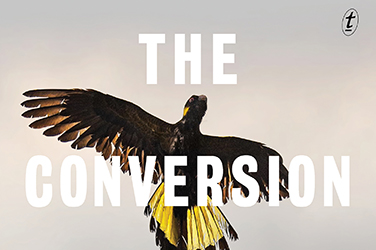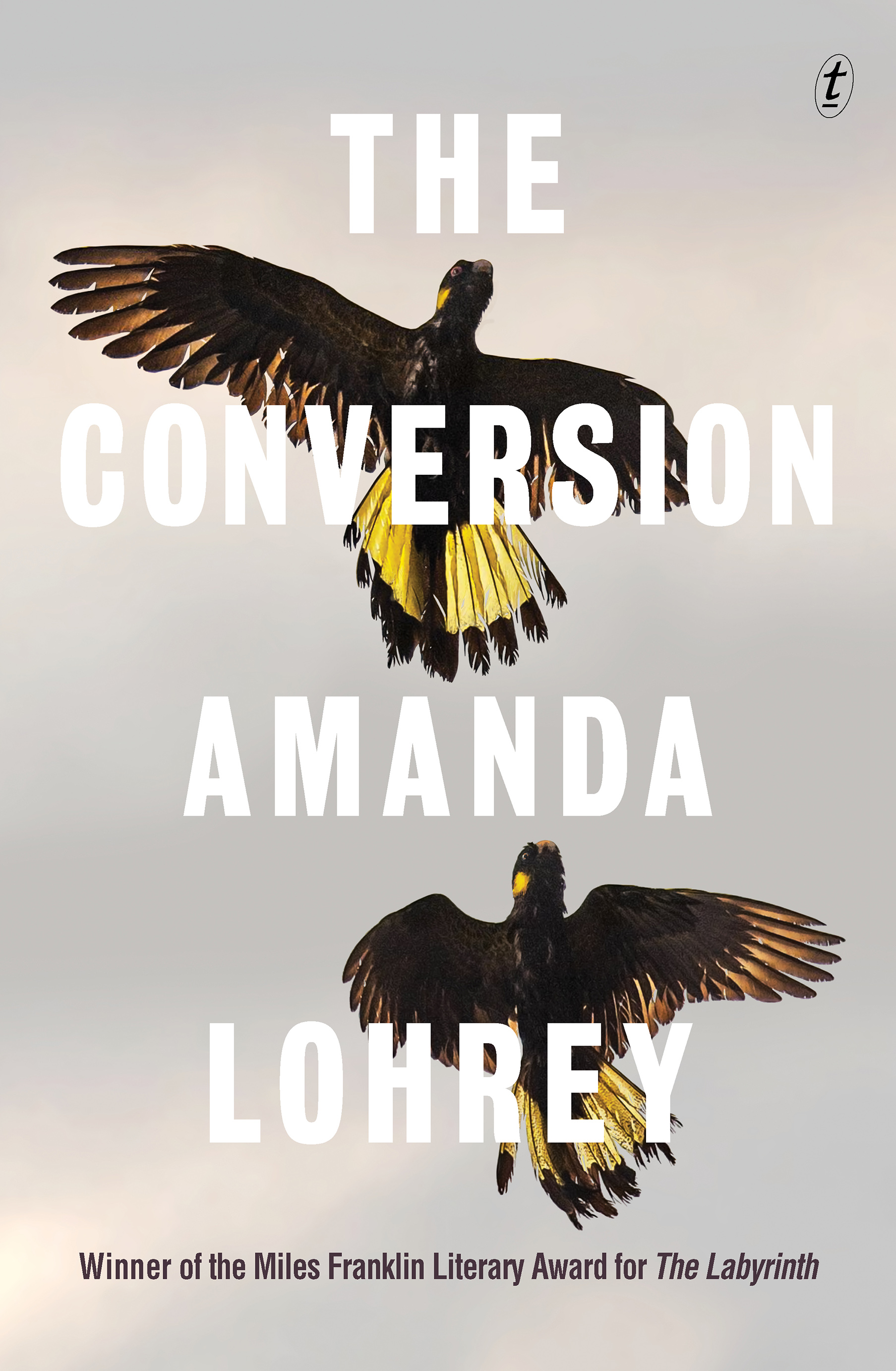
- Free Article: No
- Contents Category: Fiction
- Review Article: Yes
- Article Title: Jolts and dislocation
- Article Subtitle: Amanda Lohrey’s bravura new novel
- Online Only: No
- Custom Highlight Text:
Transformation is one thing. Conversion is another. With its Latin roots con (with or together) and vertere (to turn or bend), conversion is haunted by a sense of coercion, the imposition of one will over another. In Virginia Woolf’s Mrs Dalloway, conversion comes in the form of Clarissa Dalloway’s daughter’s evangelistic tutor, Doris Kilman, the violence of colonialism, and brutish attempts by psychologist Sir William Bradshaw to instil ‘a sense of proportion’ into his vulnerable patients. Sir William gets what he wants. He ‘shuts people up’ under the auspices of ‘the twin goddesses of conversion and proportion’. Converting, for Woolf, means ‘to override opposition’.
- Featured Image (400px * 250px):

- Book 1 Title: The Conversion
- Book 1 Biblio: Text Publishing, $32.99 pb, 240 pp
- Book 1 Cover Small (400 x 600):

- Book 1 Cover (800 x 1200):

Lohrey published her first novel, The Morality of Gentlemen, in 1984, but for a long time her reputation as one of Australia’s best writers did not result in literary awards. Her receipt of the 2012 Patrick White Award, set up by White and funded by his Nobel Prize to celebrate writers whose work is highly creative but has ‘not necessarily received adequate recognition’, acknowledged the gap between her achievement and recognition. The Labyrinth (2020) changed this. A slew of awards, including the Miles Franklin and the Prime Minister’s Literary Award for Fiction, celebrated its tender and acute study of a protagonist jolted by her son’s criminal violence out of the life she has been living.
Yet jolts and dislocation have always been part of Lohrey’s fiction, along with the nuanced, iridescent narrative mode critics and judges admired in The Labyrinth. The protagonist of A Short History of Richard Kline (2015) thinks of himself as ‘this construct, Richard Kline’ an untuned instrument or harnessed horse. The arteries of his life narrow and clog as ‘something called normality’ presses around him. Stephen and Marita in Camille’s Bread (1995) change their lives – he to devote himself to macrobiotics and shiatsu, she to live slowly with her young daughter Camille and ‘be a woman who knows how to bake a proper cake’. In Vertigo (2009), Luke and Anna move to an isolated beach after a loss that remains unnamed for much of the novella. Fire encroaches, as it does in The Conversion. Anna, like Camille, suffers from asthma and struggles to breathe.
Vertigo stems from the same Latin word as conversion, and its whirling, disorienting markers are present in The Conversion. Zoe’s history is revealed gradually through analeptic glimpses, often no more than a phrase. They come as flashes, an understated allusion to a death, estrangement, or discovery – invisible in the present, but crucial to its shape. Her best friend calls Zoe ‘a cool customer’, but her equanimity has survived hot shocks of loss and betrayal.
In the church, Zoe is haunted by women. Ghostly brides glide down the nave, veils white, trailing their trains. In a dream, a young woman from her past beats against the windows until the stained glass rattles and shakes. Like Cathy wailing for Heathcliff in Wuthering Heights, she will shatter herself to be heard, scream to be seen, though her face floats ‘featureless, a blank of milky opaque glass’. In a waking dream, Zoe hallucinates that the same woman, referred to throughout the novel as ‘the girl’ is saying to her: ‘You have abandoned me … you have not cared what has become of me.’ Then they are on a dreamed train, watching a blazing cathedral through the window. As though in a dream, Zoe sees a young woman, injured, flinching, standing in a river with her father, fishing. She witnesses her ‘disconcerting glare of grievance, of unfocused hostility’ and the helpless desperation of her father’s hope to heal her by hunting what they will not kill.
Another younger woman, Melanie Doyle, appears in Zoe’s life, vital and assertive, relentless in her pursuit of what she wants. She too wants to rattle and unsettle Zoe’s home. Zoe’s dreams shift to accommodate Melanie, who appears on a train demanding from Zoe a ticket she cannot find.
In an interview with Charlotte Wood, Lohrey comments that a narrative without dreams is ‘too mastered, too known, too literal’. Dreams, she says, are ‘messages from another realm that we don’t understand’. Melanie says that a dream mixes things so that ‘one thing turns into another for no obvious reason’. In dreams, a church might morph into a home or a restaurant, or blaze up in mystery or disaster; a person might convert herself from one kind of person to another, as though she is an actor, or melting glass.
In dreams, as in the life that holds them, themes shift and turn, as though seen through stained glass, coloured and pure, or burnt beyond repair. In this blazing, layered, bravura novel, Lohrey probes the dreamed, remembered, and hoped-for in an anatomy of freedom and aftermath.


Comments powered by CComment